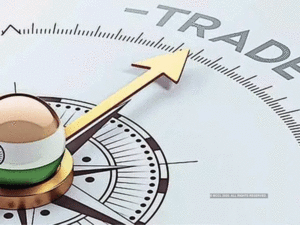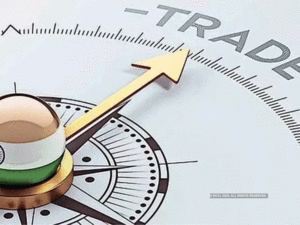
By Sanjaya Baru
In his address to the Confederation of Indian Industry (CII) on June 2, Prime Minister Narendra Modi tweaked his as yet half-baked concept of ‘atmanirbharta’ to say that it implies that goods ‘made in India’ should also be ‘made for the world’.
In other words, India needs a larger domestic manufacturing base that is globally competitive, so that what is made at home can be sold abroad.
This variant of self-reliance is different from Nehruvian import substituting industrialisation that was based on export-pessimism.
While there is again an air of export-pessimism today, on account of rising protectionism, the paralysis of multilateralism in trade, and the post-Covid disruption of maritime trade, Modi appears more sanguine, inviting FDI and asking domestic producers to ‘make for the world’.
‘Make in India’ was first formulated in the report of the National Manufacturing Competitiveness Council, chaired by V Krishnamurthy, and was adopted through the National Manufacturing Policy (NMP) 2011, by the Manmohan Singh government. The objective of NMP 2011 was the same as Modi’s ‘Make in India’ — to increase the share of the manufacturing sector in national income from a lowly 16% to 25% ‘within a decade’, creating 100 million jobs.
Both governments have failed to deliver on this promise. The share of manufacturing in national income remains stubbornly stagnant.
Several factors have contributed to this state of affairs, and almost all of them have to do with domestic policy. The main external challenge has been the non-transparent competition from China that has now become a target of Indian trade policy. Any strategy of making in India for the world but with reduced import dependence, especially on China, will require improvements in domestic productivity across all factors of production and investment in innovation and technology development. The PM did well to emphasise the importance of the latter. But the task is daunting.
While import-dependence of the economy did increase over the past two decades, the share of imports in national income rising from 13% in 2001 to 31% in 2011, there has been a decline in this ratio over the past eight years, with imports accounting for around 23% of GDP in 2018-19.
The real challenge on the merchandise trade account comes from sharply declining export growth rather than import growth. Even so, India does not as yet have a balance of payments (BoP) problem, because the surplus on the services trade account more than compensates for the deficit on the merchandise trade account. The Covid-19 disruption may impact this negatively.
According to the commerce and industry ministry, in 2019-20, India faced a deficit of $15 billion on the merchandise trade account and a surplus of $83 billion in the services trade account, contributing to an overall surplus of around $68 billion in the total trade (goods and services).
A steep fall in exports over the past few years has been on account of rising protectionism in the world markets, problems faced by exporters by the transition to GST, and GoI decision to prevent a further depreciation of the rupee, opting instead for higher product-specific tariffs.
Even though Modi asked Indian manufacturers to produce ‘for the world’, his emphasis in the CII speech was on reducing imports.
Indeed, that has been the burden of GoI’s trade and tariffs policy over the past few years. To view self-reliance as reducing external dependence was an understandable sentiment in the post-colonial era of the 1950s and 1960s. There were good reasons then for export-pessimism in the developing world, and for the popularity of ‘dependency theories’.
However, the rise of East and Southeast Asian economies encouraged a more optimistic view of international trade.
Prime Minister P V Narasimha Rao articulated this new Asian optimism on trade in his address to the All India Congress Committee (AICC) in April 1992. Seeking a new definition of self-reliance relevant to the times, Rao argued that ‘the very level of development we have reached has made us independent of the world economy in some respects, but more dependent on it in others. This is an important aspect of the complexity of modern development.’ Self-reliance, he suggested, should be viewed as borrowing to the point of one’s capacity to repay, which in terms of trade policy would focus not just on imports, but on the trade balance.
All East and Southeast Asian economies have pursued a strategy of promoting import-dependent export growth. The global supply chain based trade contributes to an increase in exports and to export related imports. Hence, the 1990s variant of self-reliance envisaged the simultaneous growth of both exports and imports, and of atmanirbharta through interdependence, rather than reduced import-dependence alone. It appears Modi has to do more to clarify his thinking on the implications of his trade policy.
The writer is distinguished fellow, Institute for Defence Studies & Analyses, New Delhi
Source: indiatimes.com

